
The highlight of today’s meeting was Barry Joseph who gave a high energy chat about his work at Global Kids. Here’s some of the transcript:
Global Kids is a NYC base educational org we work with tens around the city to develop the skills around global issues 8 years ago I founded out Online Leadership program
The Online Leadership Program combines youth development practices and world affairs with the development of high profile digital media projects to empower teens with 21st Century Skills, such as critical thinking, self-education, global knowledge, and personal empowerment.
The programs:
Virtual Video Project (VVP) The Virtual Video Project is a city-wide after-school program designed for teens interested in learning about making 3-D animated movies, global citizenship and civic engagement.
Two days a week. Global Kids computer lab.
The D.I.D.I. Initiative – The D.I.D.I. Initiative is a partnership in Second Life between Youth Venture and Global Kids to improve health and healthcare by supporting 40 groups of teens to develop social entrepreneurial projects organized within Second Life. Over 18 months, managed from the Global Kids office.
Second Life Curriculum – The Second Life Curriculum is the first public resource for using Second Life in an educational setting. It consists of over two hundred lesson plans. This fall we will offer the curriculum in a print and downloadable form, offer trainings in the new Global Kids computer lab, and start development on a comic book version using game-based learning theories.
The Second Life Science Project – Global Kids will be launching a winter/spring after school program to use Second Life to teach global issues, basic science, and computer programming. It will either be at Global Kids or Canarsie High School.
The International Justice Center – The International Justice Center in Second Life will provide a hub for raising awareness and increasing engagement around the International Criminal Court and its activities by offering educational programs, dialogues, and online and offline outreach material while supporting collaboration between individuals and organizations.
MacArthur Competitions in TSL – Global Kids will bring five areas of the MacArthur foundation into Teen Second Life — Affordable Housing, Community Change, Juvenile Justice, Global Migration and Human Mobility, and Conservation and Sustainable Development — through a year-long series of competitions
and workshops.
SL Summer Camps – Global Kids has run three summer programs within Second Life. In 2006, we took P.O.C. workshops into SL and challenged the teens to do something around an issue of their choice. In response they built a maze against child sex trafficking. This summer we ran the Convention on the Rights of the Child (CRC) Machinima Camp for UNICEF, which taught teens about the CRC and machinima production; the teens produced ten one-minute long videos about the CRC. The second summer program was a partnership with the United States Holocaust Memorial Museum in which youth from Washington, D.C., meeting at the museum, curated an exhibit about being a bystander during the Holocaust.
SL Teen Intern Program – Our new, ongoing teen intern program in Second Life is aimed at developing leadership amongst TSL residents around global and social issues.
Webcast MacArthur’s Digital Media and Learning Forums – Global Kids will stream five broadcasts into Teen Second Life, Second Life, and on the web of live public events related to current trends in digital media and learning. The first will be the upcoming MacArthur Forum on Virtual Worlds and
Learning in L.A. on November 14th – will be live in L.A. and on the USC Campus in SL.
http://www.holymeatballs.org/2007/10/invitation_wednesday.html
In addition, we will be releasing our
two reports from the SLCC – one reviewing the education track and one on best practices for non-profits in Second Life. We hope to have a follow up event from the two authors – one who is hre right now! – later this month in Second Life.
Advocate for the Role of Non-Profits and Philanthropies in Virtual Worlds – Global Kids will write and publish a number papers, reports and recommendation papers on the role of non-profits and philanthropies in virtual worlds. In addition, GK will run a conference, or a thread within an existing conference, on this topic.
Written by: kanter
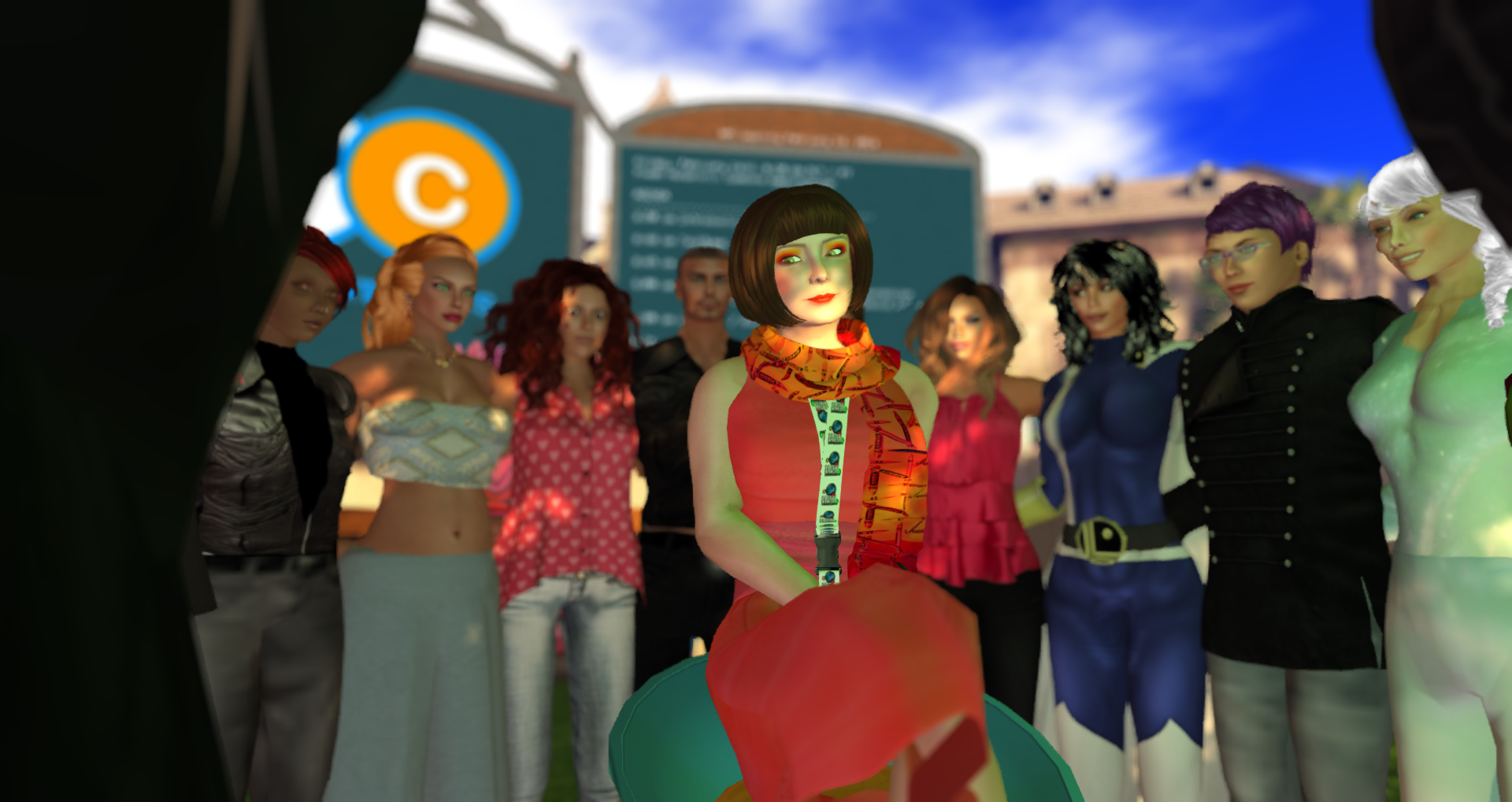


 Over 38.8 million people, in 110 countries participated in this years Stand Up and Speak Out event, a global initiative launched by the United Nations Millennium Campaign, to show support for the UN Millennium Development goals and against poverty. We joined them in their call by organising a Stand Up Against Poverty event in the virtual world Second Life. We had 70 visitors to our virtual Fight Hunger office at the Nonprofit Commons during the both events and it was really nice to meet so many interesting people and discuss ways to help end poverty and hunger. Our avatar Fight Hunchke had invaluable help of the avatar DrChaos Torok with organising the Stand Up event.
Over 38.8 million people, in 110 countries participated in this years Stand Up and Speak Out event, a global initiative launched by the United Nations Millennium Campaign, to show support for the UN Millennium Development goals and against poverty. We joined them in their call by organising a Stand Up Against Poverty event in the virtual world Second Life. We had 70 visitors to our virtual Fight Hunger office at the Nonprofit Commons during the both events and it was really nice to meet so many interesting people and discuss ways to help end poverty and hunger. Our avatar Fight Hunchke had invaluable help of the avatar DrChaos Torok with organising the Stand Up event. During the Stand Up in Second Life, the visitors were given free Stand Up bracelets and T-shirts to show their support for the UN Millennium Development goals. Here you find a link to our
During the Stand Up in Second Life, the visitors were given free Stand Up bracelets and T-shirts to show their support for the UN Millennium Development goals. Here you find a link to our  The worldwide “Stand Up and Speak Out” event broke the Guinness World Record for the largest number of people to “Stand Up Against Poverty” in 24 hours. The record attempt took place over 16th and 17th October and was jointly organised by the United Nations Millennium Campaign and the Global Call to Action against Poverty with a wide range of other partners. The challenge saw millions of people physically and intentionally standing up against poverty, inequality and in support of the Millennium Development Goals. They spoke out to demand a more urgent political response to the growing crisis of global poverty.
The worldwide “Stand Up and Speak Out” event broke the Guinness World Record for the largest number of people to “Stand Up Against Poverty” in 24 hours. The record attempt took place over 16th and 17th October and was jointly organised by the United Nations Millennium Campaign and the Global Call to Action against Poverty with a wide range of other partners. The challenge saw millions of people physically and intentionally standing up against poverty, inequality and in support of the Millennium Development Goals. They spoke out to demand a more urgent political response to the growing crisis of global poverty.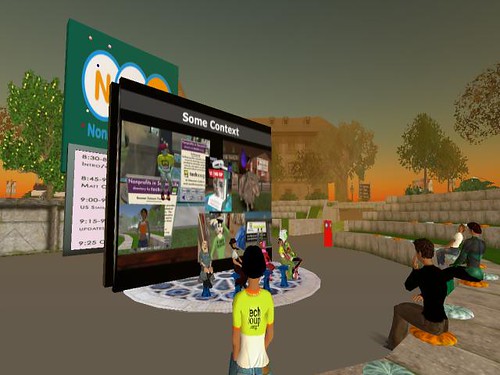
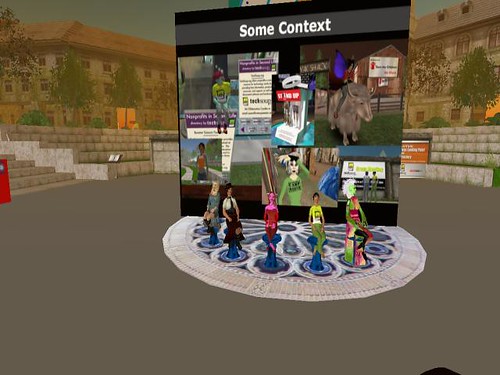

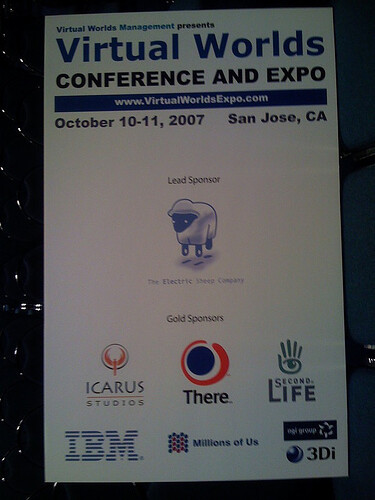
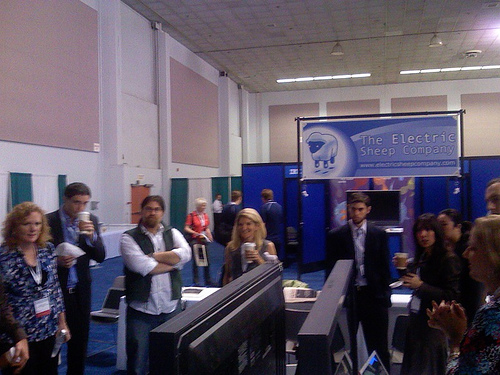
 talked about how there will soon be a choose your own adventure type of interactive entertainment that connects the TV show with a virtual world. It was apparent to me, from this conference, that games are going to take over the mass media, but little in this conference had to do with nonprofits and education.
talked about how there will soon be a choose your own adventure type of interactive entertainment that connects the TV show with a virtual world. It was apparent to me, from this conference, that games are going to take over the mass media, but little in this conference had to do with nonprofits and education.
